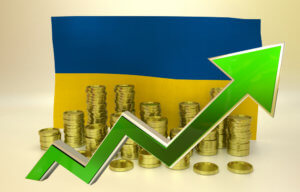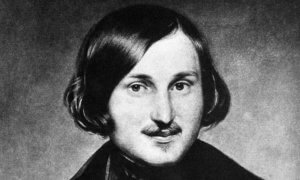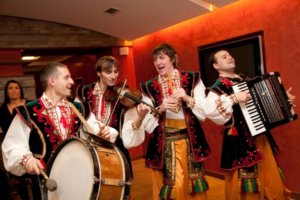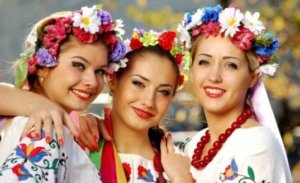Life in Ukraine today
Ukrainian economy nowadays
Not so many people in the world knew that such country exists before the events of 2014 happened and all the news reported about Ukraine, Russia and their conflict. What is the real economy situation in Ukraine now?
After the fall of 2014-2015, a number of leading experts polled by UNIAN expect that the Ukrainian economy will see growth in 2018. They say that the positive dynamics will be achieved in all major macroeconomic indicators and the fight against corruption will be strengthen and it will lead to attracting investments.

currency appreciation illustration -Ukrainian hryvnia – 3D render
Ukraine has a history of corruption and mismanagement that goes back to Soviet times. Ukraine’s economy is smaller than it was in 1992, shortly after the collapse of the Soviet Union. At the time, Ukraine and Poland had similar-sized economies, but Poland’s economy is now twice as big as Ukraine’s. The IMF estimates that the Ukrainian economy shrank 0.3% last year after barely growing in 2012. In 2013, Ukraine was ranked 144 out of 177 in Transparency International’s Corruption Perceptions Index.
Farming is very important in Ukraine; it has more arable land than any other European country and is a major producer of grain and sunflower oil. Wheat prices have risen 20% on world markets, partly because of the fear of instability in Ukraine.
Ukraine has a lot of coal mining, especially around the eastern city of Donetsk, as well as ageing heavy industry including shipbuilding, steel and arms. However, because many industries are so energy-inefficient, they are highly dependent on imports of Russian gas, which have been heavily subsidized.
The dispute with Russia has already cost Ukraine the Crimea region. It also means higher energy prices. In return for the lease of the naval base at Sevastopol for the Black Sea fleet, Russia agreed to subsidize energy exports to Ukraine. Now Crimea has been annexed by Russia and the Russian state-controlled producer Gazprom is ending Ukraine’s one-third discount.
Ukraine’s oligarch-dominated economy had already slowed before Russia’s 2014 occupation of the Crimea and the ongoing aggression in the eastern part of the country. Significant progress was made on reforms to make the country more prosperous, democratic, and transparent, but more improvements are needed, including fighting corruption, developing capital markets, privatizing state-owned enterprises, and improving the legislative framework and the rule of law. Public enthusiasm for Western reforms has waned, however, as economic stagnation continues.
Ukrainian Culture and its influence on Ukrainians
The culture of Ukraine is unique and diverse, but over the years it has been influenced by its eastern and western neighbors, which is reflected in its architecture, music and art. Folk culture is fundamental and basic for the Ukrainian national culture. Ukrainian professional science, literature and art have been formed on it gradually. The originality of Ukrainian culture has been defined by the influence of geographical conditions, peculiarities of the historical process, as well as interaction with other ethnic cultures. An important historical stage of Ukrainian culture was the adoption of Christianity in the 10th century.
Ukrainian customs are heavily influenced by Christianity, which is the dominant religion in the country (Orthodox Christianity). The Ukrainian Orthodox Church is the largest in the country. Eastern Catholicism is the second most widely practiced religion in Ukraine. Protestantism and Judaism are also well represented in the country.
Gender roles tend to be more traditional in Ukraine than in the West. Grandparents play a great role in raising children. Ukrainian humor often deals with Ukrainian everyday life and a majority of jokes make fun of stereotypical ethnic features.
The social changes brought about by Ukrainian independence are most evident in the cities. The cities, with their broad sidewalks and extensive greenery, are eminently suited for walking. Ukrainians generally do a considerable amount of walking, either to get around or simply for enjoyment. Parks are plentiful and popular for strolling or picnicking; it’s a great place for a date with Ukraine ladies because most of them live in apartments. The cities also feature numerous kiosks, which sell all kinds of wares.
Cultural pursuits and entertainment are widespread. Most of Ukraine’s major cities have ornate theatres with their own opera or ballet companies. Classical music remains popular, contemporary Western-style music has expanded its audience considerably and now dominates the airwaves on numerous commercial radio stations. Street concerts and club performances are common, as well as dance clubs and cabarets.
Food in Ukraine
The country offers a variety of restaurants that serve Chinese, Greek, Italian, or other foreign cuisine. Pizza bars and other fast-food restaurants are increasingly common as well.
Many Ukrainians, however, still prefer traditional Ukrainian foods and Ukraine ladies are the perfect cookers. Food is an important part of Ukrainian culture. Ukrainian cuisine has developed over many centuries. It was mainly based on the products obtained from farming. Ukrainians have been growing rye, wheat, barley, buckwheat and oats.
Well-known Ukrainian dishes:
- Salo (salted pork fat with, or without garlic and pepper)
- Borshch (cabbage and beets based soup, usually with pork or beef meat, served with sour-cream)
- Pampushky (small baked breads, often buttered and topped with garlic and dill)
- Holubtsi (cabbage rolls stuffed with rice and minced meat)
- Varenyky (large stuffed dumplings, can be stuffed with potatoes, cottage cheese, curds, meat, berries, etc.)
- Nalysnyky (very thin pancakes with different fillings like cottage cheese, minced meat, mushrooms or just with jam or honey)
- Syrnyky (fried cheese pancakes, usually served with sour cream, honey, or jam)
An average Ukrainian diet consists of potatoes, pasta, different types of porridge, fish, cheeses and a variety of sausages. Typically bread is a core part of every meal, and must be included for the meal to be “complete”, even if it’s pasta or varenyky. A respectful attitude to bread has been passed down through generations. It has occupied a huge part in many Ukrainian customs and rituals, symbolizing prosperity, hospitality and kindness. Ukrainians have been meeting dear relatives and guests with bread and salt. Bread has been brought to the house with the newborn. Young couples have been coming into a marriage with bread and salt.
Ukrainian Literature
With Ukraine’s independence in 1991 came a rebirth of free literary expression. Literature in Ukraine reflected all historical periods but nineteenth-century Ukrainian writers greatly contributed to the reawakening of Ukrainian national consciousness under the Russian Empire.
The classicist poet and playwright Ivan Kotlyarevsky may be considered the first modern Ukrainian author. In his work Eneyida (1798) he transformed the heroes of Virgil’s Aeneid into Ukrainian Cossacks. A different approach in literature was taken by Nikolay Gogol (Ukrainian: Mykola Hohol), who wrote Romantic works with Ukrainian themes in Russian and with a “pan-Russian” spirit.
The most important 19th-century Ukrainian poet, Taras Shevchenko, treated Ukrainian history and Russian oppression, as well as broader themes.
Lesia Ukrainka was a leading modernist author. The poet Pavlo Tychyna followed the Symbolist movement; Mykola Bazhan, one of Ukraine’s greatest 20th-century poets, employed elements of Futurism. We can name only a few as the list of Ukrainian writers and poets who are well-known all over the world is huge.
Ukrainian music
Many of its ethnic groups living within Ukraine have their own unique musical traditions. The most striking general characteristic of authentic ethnic Ukrainian folk music is the wide use of minor modes. For example, Shchedrivka “Shchedryk” is known in the West as “Carol of the Bells”.
It was composed by the music of Ukrainian composer Mykola Leontovych in 1914 and lyrics by Peter J. Wilhousky. The bulk of Ukrainian folk songs melodies are based on scales identical to mеdieval modes, but differ in melodic structure.
Ukrainian folk song singing style can be divided into a number of broad aesthetic categories:
- Solo singing – primarily ritual songs including holosinnya (sung at wakes).
- Solo singing with instrumental accompaniment of the bandura, kobza, or lira by professional singers known as kobzari, or lirnyky. The highest form of development of this style of singing can be seen in the lyric historical folk epics known as dumy.
- Archaic type of modal “a cappella” vocal style in which a phrase sung by a soloist is answered by a choral phrase in two, or three, voice harmony.
Ukrainian instrumental and dance music has also influenced Jewish and Gypsy music.
There are also many famous composers and performers of non-Ukrainian ethnicity who were born, or at some time were citizens, or were active in Ukraine. Among them are: Franz Xavier Mozart, Rheinhold Gliere, Isaak Dunayevsky, Sergei Prokofiev and Yuliy Meitus. Among famous performers are Volodymyr Horovyts, Sviatoslav Richter, David Oistrakh and Isaac Stern. The music of these composers rarely contains Ukrainian folk motives and is more often written to the texts of Russian or Polish poets.
Men and women in Ukraine. Family Values
What is happening in the modern world with Ukrainians?
The amount of women in Ukraine is big but the amount of men is small. The demographic gap was formed as a result of wars – after losses in the First World War and the Civil War. Vodka, drugs, risk and other factors do their job too. As a result, male population reduces, and women’s chances to become lonely increase. That’s why women are used to do everything by themselves. After that, the following generations are brought up in a distorted field: the boys don’t have a male example of behavior and they are raised an infantile feminine way and the girls are raised with the understanding of being a supporter of the family. And then this script is passed on from generation to generation. And it still works. Ukrainian women strive to be independent.
Only men from other countries can judge the quality of beautiful Ukrainian ladies. They come to Ukraine and find Ukrainian women for building a family. And no one from abroad is looking for Ukrainian men.
There is a great contrast between Ukrainian women and men. Women take care of themselves. The way you look and dress say a lot about a person. If a man looks untidy, it causes some kind of emotional rejection.
But, on the other hand, Ukrainian men can be very kind and attentive. They know how to talk to a lady, kiss her hand, open the door, skip ahead, and give a coat.
The huge shortage of Ukrainian men is that they are authoritarian and intolerant. And it turns out, less civilized. They often say one thing, and think another (although this can apply to women). These dictatorial habits and back thoughts in communication are immediately felt by foreigners, and this is unpleasant.
Ukrainian women could engage in any profession – from the development of computer games to aviation tasks, because the IQ of Ukrainian people is no worse or better than, say, the Jews. You can meet Ukrainian women all over the world, in every country. For example, Portugal is based on Ukrainian weavers, Italy – on Ukrainian cleaners and nurses. Nothing can stop Ukrainian woman if she realizes that she needs to be a supporter of her family.
Family values
Family values are one of the most important landmarks that determine not only the life of an individual, but also the existence of entire countries and peoples. Family values are inextricably linked with the concepts of traditional morality adopted by different cultures. In this regard, the views of Ukrainians on family values are historically have their routes in Orthodox-Slavic civilization.
The centuries-old religious tradition has formed in the Ukrainian people special respect for such concepts as faith, faithfulness, love, the firmness of family and marriage, the sanctity of motherhood, the procreation. Family values based on the norms of traditional morality presuppose moral purity in the relationship between men and beautiful Ukrainian ladies; therefore they are incompatible with extramarital cohabitation and the refusal of the birth of children, and even more – with same-sex relationships.
Unfortunately, today there is a crisis of the traditional family in Ukraine, caused primarily by the sharp impoverishment of a large part of the population, as well as a significant erosion of the traditional moral and ethical norms and attitudes in the mass consciousness.

